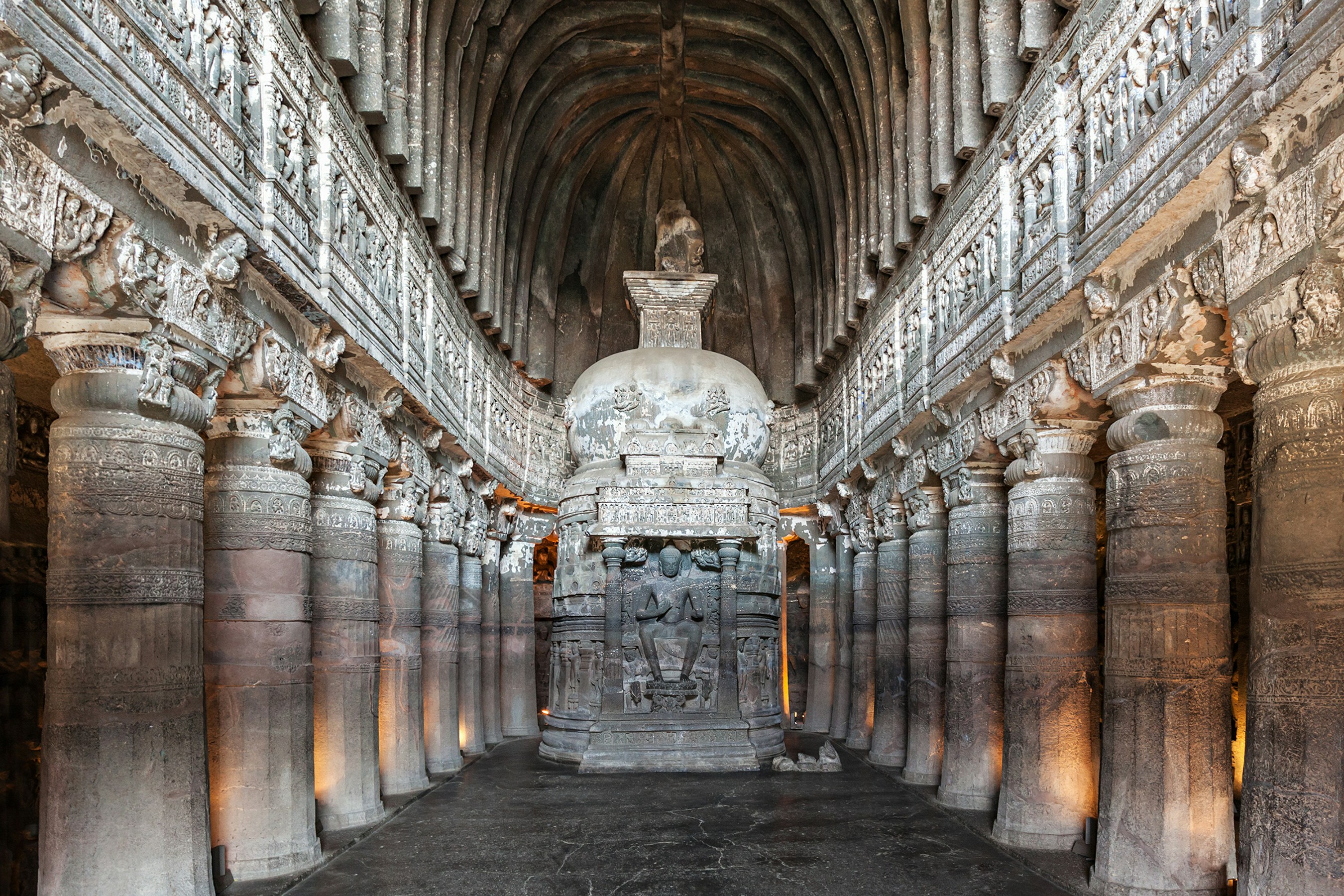
The Ajanta and Ellora Caves are two of India's most famous archaeological sites. Recognized as UNESCO World Heritage Sites, they represent a huge part of India’s spiritual and artistic history. These caves attract travelers, history lovers, and art enthusiasts from around the world. Their intricate carvings, ancient paintings, and religious significance make them a must-see destination. Exploring their secrets will give you a glimpse into India’s long history and rich culture.
History and Origins of Ajanta and Ellora Caves
The Ancient Beginnings
Construction of the Ajanta and Ellora Caves dates back thousands of years. The Ajanta Caves began around 200 BCE and continued to be developed until about 650 CE. These caves were created by monks and artisans over centuries. During that time, powerful kingdoms and dynasties supported the arts and religion. The caves served as monasteries, temples, and places for meditation.
Key Historical Milestones
The Ajanta Caves reached their peak during the Satavahana dynasty, famous for their Buddhist art. Later, Ellora’s caves show a shift in religious influence, with Hindu, Jain, and Buddhist elements. Some caves at Ellora, like the Kailasa Temple, were built in the 8th century and took hundreds of artisans to complete. These sites kept changing, reflecting new religious ideas over time.
Preservation and Restoration Efforts
Today, conservation teams work hard to protect these ancient caves. Over the years, weather and pollution have damaged many carvings and paintings. Modern efforts include cleaning, reinforcing, and restoring artwork. Despite challenges like natural weathering and human impact, the caves still stand proud as symbols of India’s history. Preserving them is key for future generations to learn from.
Artistic and Architectural Marvels
Unique Features of Ajanta Caves
Ajanta is famous for its colorful rock-cut paintings and sculptures. These artworks are over 2,000 years old. The walls tell stories from the Jataka tales, which show the previous lives of Buddha. The detailed images feature animals, people, and gods in vibrant colors that have survived many centuries. These paintings brought stories alive and showed the skill of ancient artists.
Architectural Wonders of Ellora
Ellora’s caves are a mix of three faiths: Buddhism, Hinduism, and Jainism. This diversity makes Ellora unique. The caves include monasteries, temples, and large sculptures carved directly into rock. Among these, the Kailasa Temple stands out as a giant monolithic structure. Built from a single massive rock, it looks like a mountain top. Its size and complexity amaze visitors even today.
Artistic Techniques and Styles
The artisans used simple tools like chisels and hammers to carve the caves. Many of the sculptures show a mix of Indian art styles and religious iconography. They depict gods, saints, and mythological stories in stunning detail. These techniques helped spread religious ideas and inspired other artists for centuries.
Religious Significance and Spiritual Heritage
Buddhist Roots of Ajanta
Ajanta Caves served mainly as Buddhist monasteries. The art and sculptures focus on Buddha and his teachings. These caves helped spread Buddhism across India. Important icons include Buddha statues, prayer halls, and stupas. The detailed carvings also symbolize meditation and enlightenment.
The Transition to Hindu and Jain Influences at Ellora
Ellora’s caves show that India’s faiths evolved over time. The Kailasa Temple is dedicated to Hindu Lord Shiva. Jain caves reveal the importance of Jainism, with intricate carvings of monks and sacred symbols. These caves show respect for multiple religious paths and their shared history.
Contemporary Spiritual Relevance
Even today, both Ajanta and Ellora are active spiritual sites. Many pilgrims visit to pay respects, meditate, or simply admire the art. They remind us that India’s culture is built on a long history of religious diversity. These caves promote unity and cultural continuity.
Visiting Ajanta and Ellora Caves: Practical Guide
Planning Your Trip
The best time to visit is during the cooler months from November to February. Monsoon season (June to September) can make exploring difficult. Nearby towns like Aurangabad offer hotels and transportation options. Guided tours can help you understand the history and details of the caves better.
Exploring the Caves
You can explore by yourself or with a guide. Guided tours provide stories behind the carvings and paintings. Photography is allowed but avoid flash to protect the artwork. Take your time to appreciate the craftsmanship and imagine what life was like thousands of years ago.
Conservation Etiquette
Respect the site by not touching or damaging the carvings. Follow all safety rules and stay within designated areas. Remember, these caves are fragile remnants of history. Your careful behavior helps preserve their beauty for future visitors.
Scientific Insights and Discoveries
Excavations and Archaeological Findings
Many caves were hidden under vegetation or damaged over time. Archaeologists have uncovered new caves, statues, and paintings during recent excavations. These discoveries give us a clearer picture of ancient Indian life and beliefs.
Preservation Challenges
Weather, pollution, and foot traffic threaten the caves’ longevity. Researchers use innovative techniques like laser cleaning and climate control to protect the carvings. These efforts are vital to keep the caves safe and intact.
Key Takeaways
The Ajanta and Ellora Caves are more than just ancient structures—they’re windows into India’s past. Their art, architecture, and spiritual stories reveal a civilization rich in creativity and faith. Responsible tourism and conservation efforts are key to preserving this heritage. Visiting these sites offers a chance to step back in time and understand India’s cultural roots.
By exploring the caves, you become part of their story. Take your time, respect their history, and celebrate India’s incredible legacy.
Conclusion
The Ajanta and Ellora Caves stand as timeless monuments celebrating India’s artistic talents and spiritual diversity. Their intricate carvings, breathtaking architecture, and centuries-old stories inspire awe. As you plan your visit, remember the importance of caring for these treasures. They connect us to an ancient world still alive today, reminding us of the power of faith, art, and history. Make sure to experience their wonder firsthand and help protect this priceless cultural heritage.